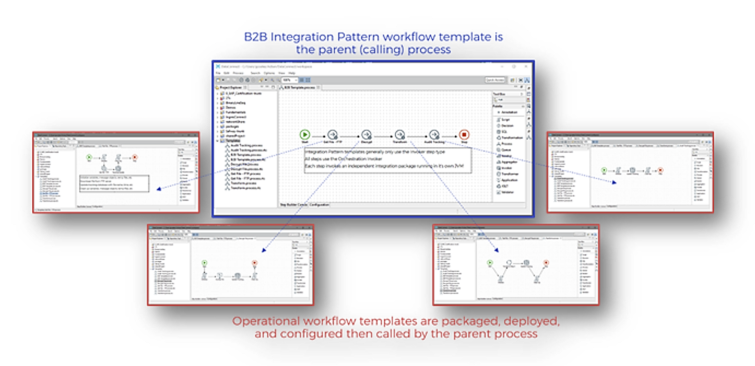Use Orchestration
Build your templates to take full advantage of the orchestration functionality in Actian DataConnect. The Job Orchestration invoker in Process Designer facilitates execution of pre-deployed integrations as part of any process workflow. Thus, an orchestration workflow can invoke jobs sequentially or in parallel similar to any other process design.
From a top-down perspective, you must break large, complex workflows into smaller, compartmentalized workflows that perform specific operations as part of an orchestrated job execution. These operational workflows are easier to build, debug, and maintain. An additional benefit of the smaller size and independent nature makes them much easier to generalize for reuse.
Orchestration workflows provide high-level integration patterns common in scenarios such as:
• B2B integrations when exchanging data files with external parties
• A2A integrations when exchanging message-oriented data among applications
• Migrations from one application to another repeatedly
Operation workflows are the building blocks that often use very repeatable tasks such as:
• Sending or receiving a file via FTP
• Encrypting or decrypting data
• Logging document status
• Posting a RESTful API request

A major benefit of using this approach at runtime is that each integration job that is called through the Orchestration invoker runs in its own process space in memory. This lowers the overall memory consumption on the server, allows the OS to manage resources better, isolates errors that can otherwise stop processing, and provides the ability to restart a longer running workflow at a specific point.
Note: The maximum number of parallel or concurrently running jobs is based on your license agreement.
Last modified date: 06/30/2025